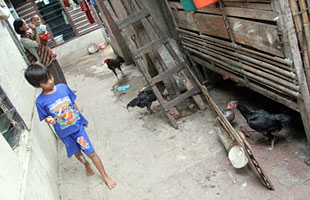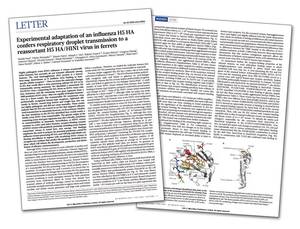The issue of the H5N1 virus: research will be published entirely
2012/04/19 Carton Virto, Eider - Elhuyar Zientzia Iturria: Elhuyar aldizkaria

The U.S. government, recommended by the Advisory Council on Biosafety (CSIC), requested on December 30 that two investigations carried out with the H5N1 flu virus will not publish the complete results. In particular, and in the name of security, they asked the authors and journals Science and Nature to publish the results of their research that withdraw the details of the methodology of the articles and that there is not enough information to be able to repeat the results, so that they were not in the hands of potential bioterrorists. Three months later, and many scrambled later, the advisory council has changed its mind and has shown support for publishing the investigations in its entirety.
The decision was taken after a summit held at the end of last March. Members of the Advisory Council and several independent monitors participated and the researchers presented additional data and information. In his light, the advisory council revoted. One of the articles, owned by researcher Yoshihiro Kawaoka of the University of Wisconsin-Madison of the United States, was unanimously supported; the other, by researcher Ron Foulchier of the medical research center Erasmus of Rotterdam, received six votes against since the 18th. Thus, both articles will be published in the journals Science and Nature in the manner provided, and all researchers will have access to the data, not limiting access to authorized concrete persons.
The new recommendation of the Advisory Council on Biosafety has been added to what was agreed at the end of last February at the meeting of the World Health Organization, in which it is stated that the full publication of the research will contribute more than to a detriment to public health. In fact, in these investigations, both groups have created variants of avian influenza H5N1 mutationally in the laboratory and have seen that the new variants have been able to infect ferrets by the airways. Ferrets are the best example to carry out human flu studies that are spread through the airways, so the results are worrying: variations have acquired the capacity through very few mutations and indicate that the H5N1 virus of birds can produce a pandemic of flu in humans greater than expected. Therefore, it is important that all members of the flu surveillance network know these mutations and variants in order to be attentive in case they arise naturally.
In recent months, however, the conclusions of the investigations have caused more concern and weakness than the conclusions themselves.

Gai honi buruzko eduki gehiago
Elhuyarrek garatutako teknologia





